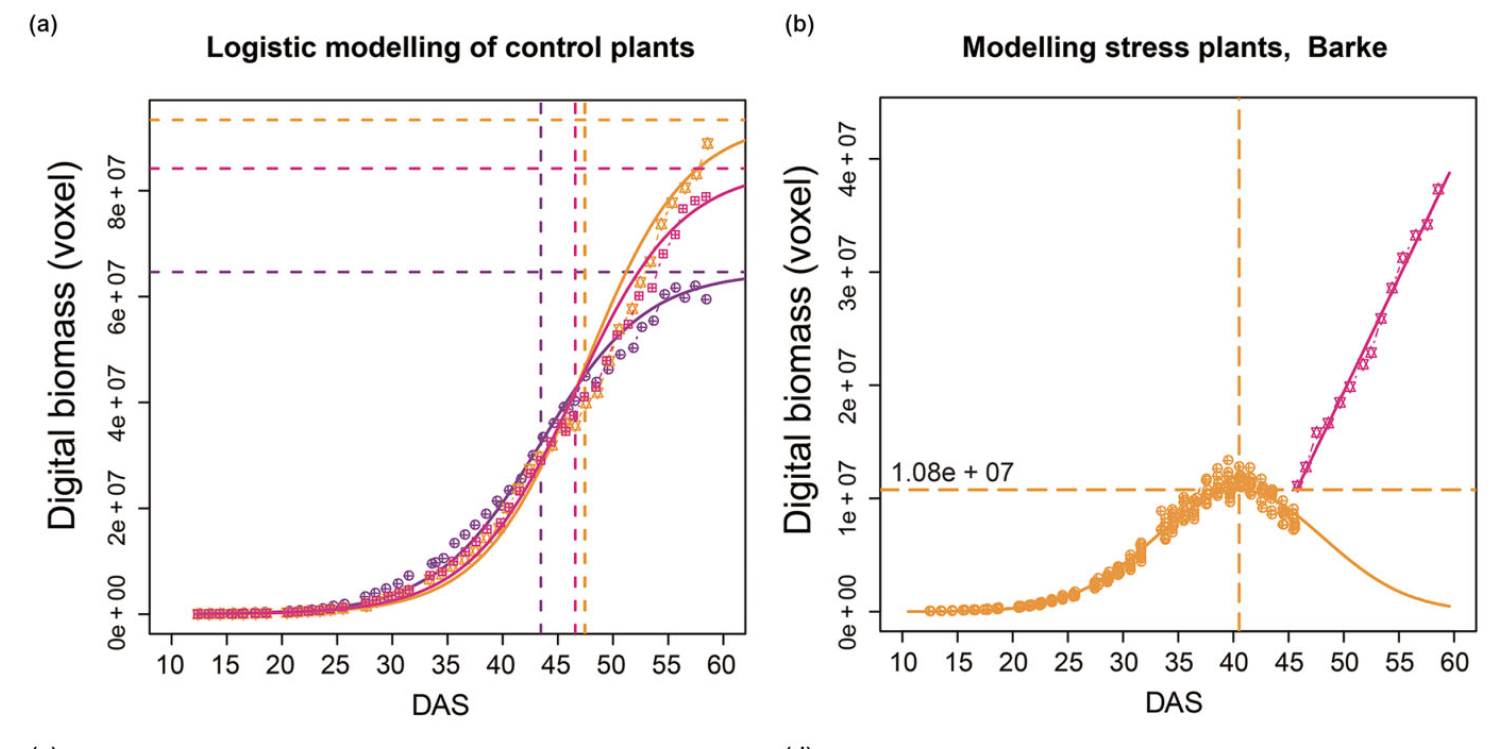Dissecting spatiotemporal biomass accumulation in barley under different water regimes using high-throughput image analysis.
Neumann K, Klukas C, Friedel S, Rischbeck P, Chen D, Entzian A, Stein N, Graner A, Kilian B
Plant Cell Environ. 2015 Oct;38(10):1980-96. doi: 10.1111/pce.12516.
Phenotyping large numbers of genotypes still represents the rate-limiting step in many plant genetic experiments and in breeding. To address this issue, novel automated phenotyping technologies have been developed. We investigated for a core set of barley cultivars if high-throughput image analysis can help to dissect vegetative biomass accumulation in response to two different watering regimes under semi-controlled greenhouse conditions. We found that experiments, treatments, genotypes and genotype by environment interaction (G E) can be characterized at any time point by certain digital traits. Biomass accumulation under control and stress conditions was highly heritable. Growth model-derived maximum vegetative biomass (K max), inflection point (I) and regrowth rate (k) were identified as promising candidate traits for genome-wide association studies. Drought stress symptoms can be visualized, dissected and modelled. Especially the highly heritable regrowth rate, which had the biggest influence on biomass accumulation in stress treatment, seems promising for future studies to improve drought tolerance in different crop species. A proof of concept study revealed potential correlations between digital traits obtained from pot experiments under greenhouse conditions and agronomic traits from field experiments. Overall, non-invasive, imaging-based phenotyping platforms under greenhouse conditions offer excellent possibilities for trait discovery, trait development and industrial applications.
